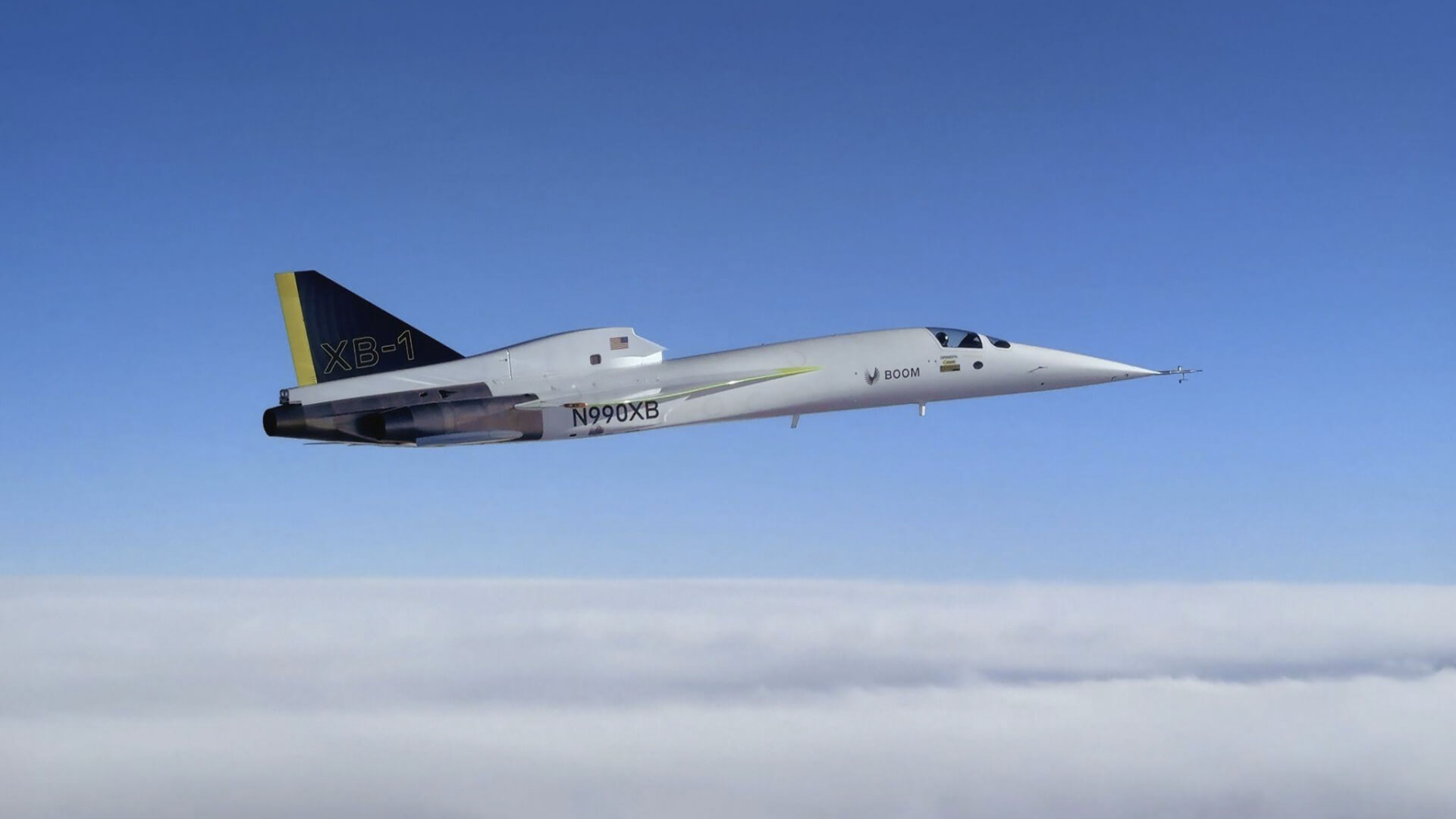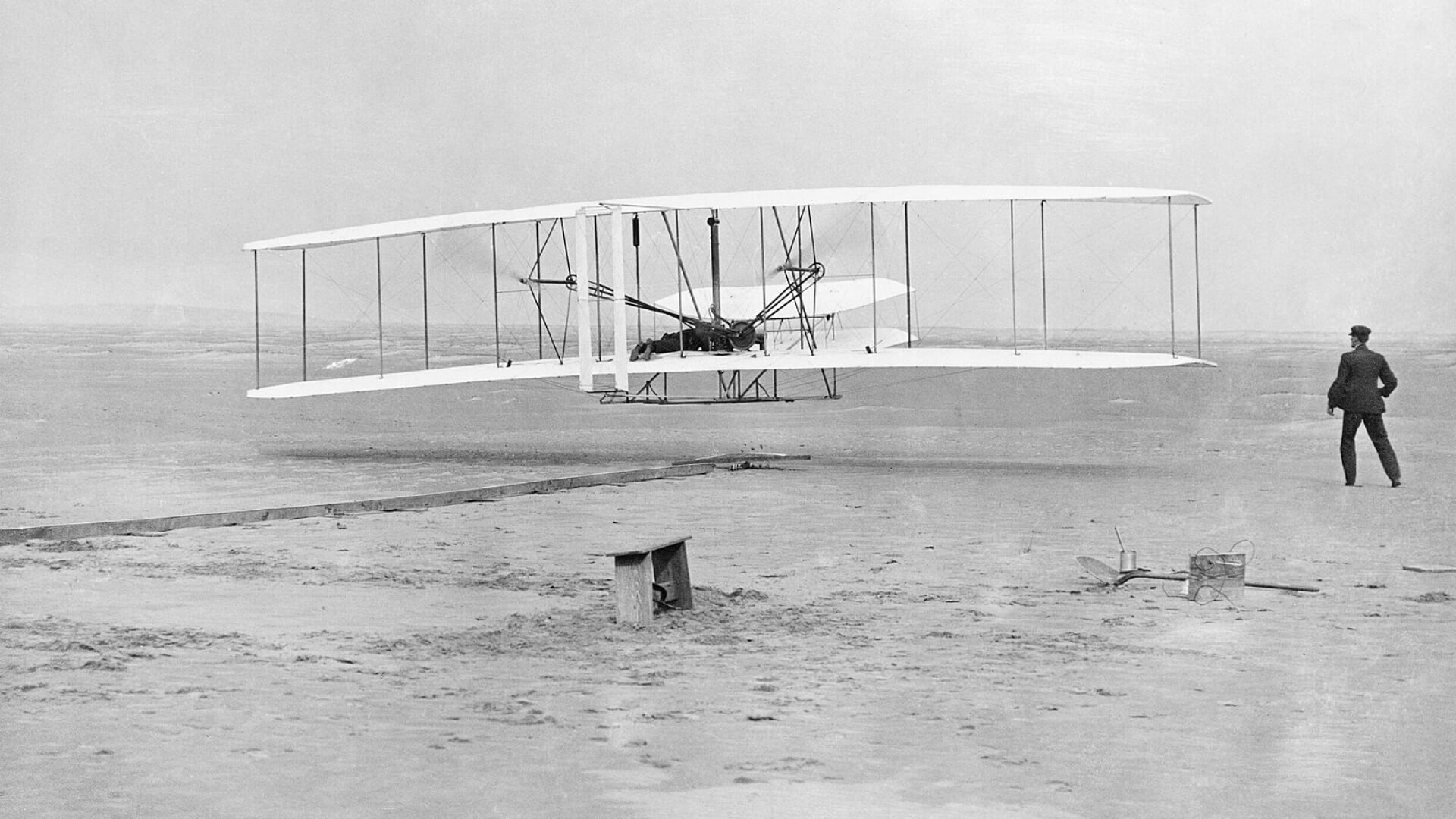Taxi testing is another stepping stone in aircraft development—and the last series of tests before first flight. XB-1 recently conducted its first taxi test at Centennial Airport in Colorado, which comes before faster taxi testing and flight.
Nick Sheryka is Boom Supersonic’s Chief Flight Test Engineer, which means he is responsible for the planning and execution of aircraft testing from the control room. Here’s what he had to say when we asked him the very simple question, what is taxi testing and what will the XB-1 team learn from it?
Nick Sheryka: Before XB-1 flies, we need to trust the way it will behave on the ground. Taxi testing is conducted for any new aircraft type, and XB-1 is no exception. The main objectives are to demonstrate that XB-1’s handling qualities, performance, and system behavior can translate into safe takeoffs, landings, and ground maneuvering in the airport environment.
At very low speeds, XB-1 uses a hydraulically powered nose wheel steering system while navigating around the airport. The system enables XB-1 to make very tight turns onto taxiways and into/out of parking spots, but is too sensitive for high speed operation. That’s why at high speeds (during the takeoff and landing) the system is turned off and the aircraft is controlled directionally with the rudder and differential braking. In each of these modes, we will execute test points, such as capturing the centerline of the runway to within a tight tolerance, that are designed to elicit qualitative assessments from our test pilots on how the aircraft feels. Many times we use the Cooper-Harper scale to rate how easy or hard the task was to accomplish.
In addition to these handling quality tests, the team will also assess some key areas of XB-1’s performance as much as possible while still on the ground. There are also some systems that can only be tested with the aircraft in motion, and we want to demonstrate them before we fly.
- Vehicle acceleration under maximum thrust: We want to make sure we can get off the ground with as little runway as we think we can.
- Stopping power and heating of the wheels and brakes: After returning from a flight we need to stop on the intended runway from high speed, this requires very high performance carbon brakes that get hot!
- Rotation authority/elevator effectiveness: In order to fly, we need to pick the nose up by pulling back on the stick and deflecting the elevator. Given that the airplane is still in ground effect this can be more challenging to simulate with computational fluid dynamics (C.F.D.) than when the aircraft is in flight, so we want to correlate our predictions with some empirical data.
- Drag Chute System: XB-1 has a drag (or “drogue”) parachute behind the vertical tail in order to slow the airplane down in the unlikely event of a brake failure. We want to gain trust that it will work before we need to use it.
During each taxi test, in addition to a test pilot in the aircraft and the ground crew on the ramp, we will have 10-20 engineers in the control room watching safety critical parameters transmitted in real time over the telemetry system. Pulling off testing like this takes a large, coordinated team effort.
Just like we did during our engine run test campaign this past year, we use the taxi testing opportunities to practice control room operations, communications, and safety protocols in real time. When we graduate from taxi testing, our team, in addition to our airplane, will be tested, proven, and ready to rise to the challenge of flight test.
Our initial low speed taxi testing begins at around 10 knots and progresses up to around 60 knots. We have been privileged to have the excellent support of the staff at Centennial Airport, in our home base location where we built XB-1, up to this time. However in order to progress into what we call medium speed taxi testing (60 ~ 135 knots) we require the use of the wider runways that Mojave Air & Space Port has to offer, which is our next stop.
During the next phase, keeping the speed below 135 knots ensures that we could not accidentally take off if something does not go as planned. This has actually happened during test campaigns in the past, and the lessons learned from those events are now part of a more modern approach to taxi testing that places scrutiny on the value of conducting high-speed taxi testing at or very near flying speeds.
From a safety perspective, this trades well against the fact there will be some unexplored territory (up to the speed we will leave the ground) that is only experienced during first flight.
Learn more about XB-1 and its 2022 milestones here.







